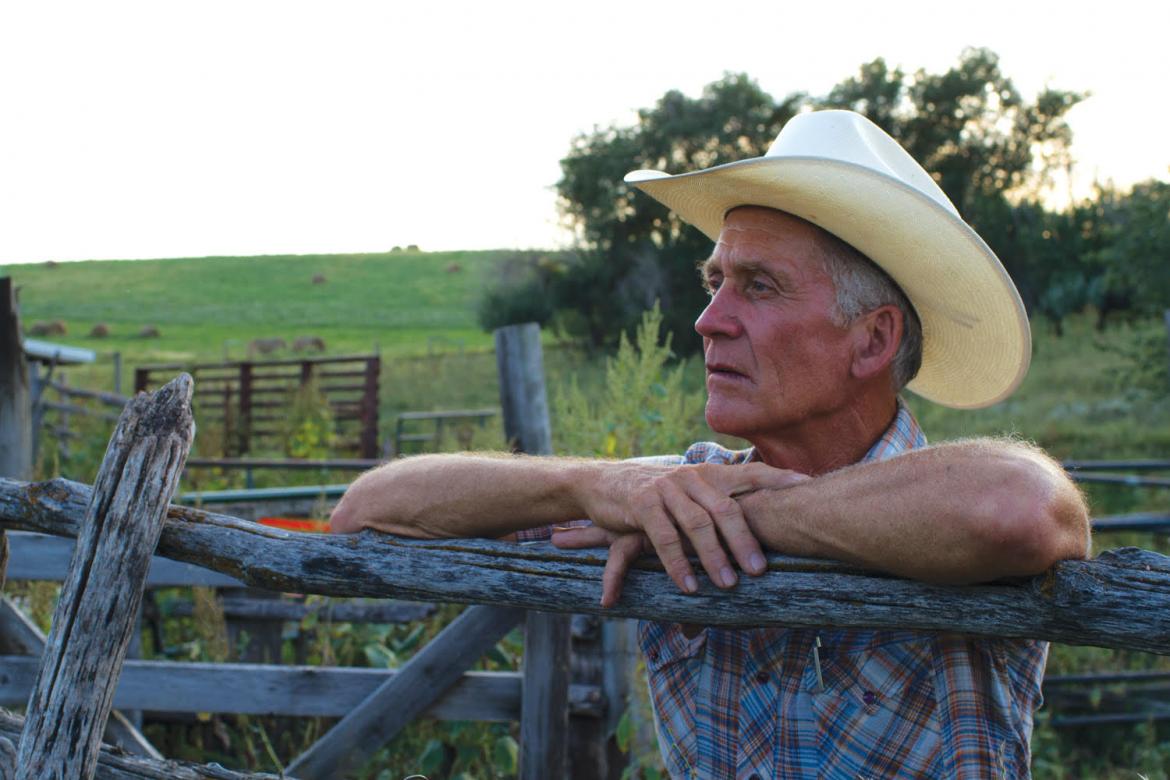
Sierra Club member and environmental activist John Heiser
From a young age, John Heiser knew that his future was to spend life outside. A fourth-generation descendant of homesteaders who arrived in North Dakota's legendary badlands region in 1891, John grew up on his family's ranch, wrangling cows and riding horses bareback. In the 1960s, his father worked at what was then called Theodore Roosevelt National Memorial Park, named after the revered president whose formative years were spent immersed in local frontier life. So after graduating college, it was only natural that John went to work for the park himself, becoming a ranger in 1973, five years before it was established as a national park and designated wilderness.
Over his long tenure, John has served as a law enforcement officer and backcountry ranger and has led a variety of activities, from fireside presentations and bird walks to wilderness hikes and cross-country ski treks. Back in 1974, he and district ranger Ralph Roye pioneered one of the park's two backcountry units on horseback, where they laid out and named the park's two longest trails, an accomplishment that John remains proud of to this day. Throughout it all, he's maintained his family-run beef business on land Theodore Roosevelt used to ride across. "I simply cannot spend any time indoors," he says, "as both of my jobs indicate."
As someone whose life and livelihood are intimately tied to the land, John has been a passionate environmental champion of the badlands and a vocal opponent of the encroaching oil extraction industry of the Bakken oil fields, which includes drilling, fracking, flares, pipelines, truck traffic, and thousands of oil workers who have transformed the culture and environment of western North Dakota. John has observed and documented global warming since the late 1980s, in part by keeping track of badlands phenology in natural history journals, and he works to minimize his carbon footprint in the park and on the ranch. In the winter of 2016–17, he says, "I burned exactly zero molecules of liquid hydrocarbons in a stretch of 108 consecutive days while feeding 70 Hereford cattle multiple times a day." He also cofounded the Badlands Conservation Alliance, a local group that works on public lands and oil boom issues alongside the Sierra Club.
"Even though my ranch hayfields beckoned, it was a real joy to lead Sierra Club Outings participants on a natural history hike through my favorite ecosystem."
Though John is quick to point out he's been a Sierra Club member and environmental activist for over 50 years, it wasn't until meeting trip leader Phil Snyder in 2018 that he developed a relationship with Sierra Club Outings. On Phil's trip the following year, John visited the group every day to make hike suggestions and to ensure their safety and enjoyment. Assistant leader Margaret Klose recalls he made quite an impression. "Everyone was drawn to Ranger John as he talked about life in the North Unit and what he was doing on his ranch," she explains. "He takes great pride that he cuts all his own wood as the primary source of heat on his property."
During their stay, Phil says, John "went way above the call of duty." When it rained, he appeared early in camp and steered the group from a slippery-when-wet trail to a safer route. On his day off, he led them to an unmarked ridge trail that would have been difficult to follow without his intimate knowledge of the area. "Even though my ranch hayfields beckoned that day," he says, "it was a real joy to lead Sierra Club Outings participants on a natural history hike through my favorite ecosystem." And when, on another hike, they had an emergency and called 911 for assistance, John led 10 first responders to the rescue. "We all learned so much from Ranger John," Margaret says.
But John's expertise was perhaps best displayed when they encountered a lone bison bull blocking the trail. John calmly described the animal's expected behavior and his plan to avoid him. After acknowledging the group, the bison grew tired and decided to make his way down the trail. When asked how he could predict what the animal would do, "John replied, 'I know 'em all,' meaning he was familiar with all 200 bison in the North Unit of the park," Phil says. "We didn't doubt him."
"We all talked about Ranger John the rest of the week," Margaret recalls." I can say I've never quite met anyone like him, and I'm happy he's out there doing what he can to make this world a better place." Are you interested in exploring the badlands with the legend himself? Join us for Dayhiking the Badlands of Theodore Roosevelt National Park, North Dakota.
